Breathing new life into your home’s old wood floors can be as simple as applying a fresh coat of paint. However, selecting the right paint for this task is no trivial matter.
The right paint for your wood floors can create an ambiance that complements your overall interior design, personal taste, and room function. Taking the time to carefully select the best paint type, shade, and finish can save you money on maintenance and potential repairs, ultimately adding value to your property.
In order to achieve a professional finish, it’s important to understand what to look for and how to go about choosing the right paint. Let’s break down this process step-by-step.
How The Type Of Wood Can Influence Paint Selection
Wood floor paint is specifically designed to withstand the increased wear floors go through. It can dramatically reimagine the aesthetics of your home, providing new life to old, scratched, or discolored wood floors. Wood floor paint is a specific kind of paint designed to withstand the wear and tear common to flooring. This type of paint adheres well to wood surfaces, endures heavy foot traffic, resists stains and chips, and maintains its color and finish over time.
Applying paint to a wood floor is a great way to give the area a new look, whether it’s a vivid color for a contemporary feel, a traditional white for a rustic look, or a clear coat that lets the wood’s natural beauty shine through. Regardless of the aesthetic one is after, using the appropriate wood floor paint can be a game-changer. However, choosing the right type and understanding the complexity of the process is key to achieving the best results.
The grain pattern and texture of the wood are primary considerations as they can impact the aesthetic finish once painted. For example, a smooth wood like maple can accentuate the sheen of the paint and provide a sleek, modern look. However, a rough textured wood like oak may offer a more rustic and rugged charm when painted.
The hardness of the wood is another critical factor in paint selection. Dense hardwoods such as oak, cherry, or walnut, which hold up well under regular use, can pair well with darker colors or glossy paints. These woods can withstand daily wear and tear without the risk of exposing dings and scratches. In contrast, softer woods may be better suited to lighter colors or matte finishes, which can help conceal potential imperfections.
In addition to texture and hardness, the natural color of the wood will also influence your paint choice. Lighter woods like pine or ash allow the paint color to reflect its original shade. Darker woods, conversely, can subtly affect the finished look of the paint color, potentially requiring a primer or extra coats of paint to achieve your intended color.

Why Is Wood Floor Paint Different From Other Paints?
Unlike regular paints, wood floor paint is typically available in semi-gloss, acrylic, or oil-based finishes. This finish variety gives you an appealing sheen and superior durability, commercial-grade resistance to scuff marks and stains that are essential for a floor’s longevity.
Consider that primer is your reliable friend, crucial for sealing the wood and ensuring the paint properly adheres to the surface.
Types Of Wood Floor Paint
The main types of wood floor paint include polyurethane, acrylic, and latex paints.
- Polyurethane offers a robust coating that resists wear and tear, ideally suited for high-traffic areas.
- Acrylic blends balance durability and ease of application, excellent for spaces you frequently alter in style.
- Thanks to its easy application and cleanup, latex floor paint is typically the best bet for do-it-yourselfers.
Choosing The Best Paint For Wood Floors
When choosing the best wood floor paint, consider factors like texture, durability, color, and finish. The type of paint you need hinges on the condition of your old wood and the floor’s exposure to wear and tear. Looking for a paint that’s perfect for your porch or high-traffic interior?
An acrylic paint with an anti-slip finish can be your best bet. When it comes to paint colors, choose one that matches your interior decor but at the same time can stand up to the test of time — and footprints.
Benefits Of Using The Best Paint For Wood Floors
Choosing the best paint for your wood floors can lead to several distinct advantages:
- Longevity And Durability: High-quality paint can withstand the wear and tear of daily foot traffic, reducing the frequency of maintenance.
- Aesthetic Appeal: A well-selected paint can enhance the natural beauty of your wood floors, highlighting their grain and texture.
- Protection: The right paint can act as a barrier for your floors, protecting them from scratches, stains, UV light damage, and moisture penetration.
- Easy Cleaning: Quality paint provides a smooth, sealed surface that’s easy to clean and maintain, keeping the floors looking fresh and vibrant.
- Cost-Effective: While superior quality paint may cost more upfront, its durability means lower maintenance and repainting costs in the long run.
- Increased Property Value: A nicely painted and well-maintained wood floor can boost the appeal of your home, potentially adding to its resale value.
A Step-by-Step Guide To Choose The Right Paint For Wood Floors:
Here’s a step-by-step guide to choosing the right paints for wood floors;
Step 1: Determine Your Objective
Take a moment to consider what you hope to achieve. Ask yourself the following questions:
- Are you looking to brighten up the room?
- Do you want to create an artistic statement?
- Are you trying to hide imperfections on the wood floor?
- Is your goal to sync the wood floor visually with the overall design theme?
Step 2: Assess The Condition Of Your Floors
The condition of your wood floors is crucial in how well your chosen paint will adhere. Check to see if your floors:
- Have major dents or scratches
- Show signs of warping
- Suffer from mold or mildew
- Have unevenly worn surfaces
All of these factors can impact the type of paint needed and may require further attention before starting.
Step 3: Choose The Ideal Paint Finish
Selecting the right finish for your painted wood floors is crucial to achieving a beautiful and durable final product. You have several choices when it comes to finishes:
- Matte Finish: Offers a subdued, non-reflective surface. It requires more frequent maintenance but hides imperfections better than other finishes.
- Satin Finish: This is a low-luster finish that retains a subtle sheen. It is ideal for high-traffic areas as it is durable and easy to maintain.
- Semi-Gloss Finish: As the name suggests, this finish is moderately glossy but not overly reflective. Great for adding depth and dimension to your floor, it also offers better durability than a matte or satin finish.
- Gloss Finish: The most reflective option, a gloss finish creates a polished and contemporary look. It is highly durable but may not be suitable for spaces with uneven floors or major imperfections.

Step 4: Select The Right Type Of Paint
There are three common types of paint suited for wood floors:
- Oil-Based Paints: Offer longer-lasting durability and resistance to moisture and wear. However, they take longer to dry and have a stronger odor than other options.
- Water-Based Paints: Also known as latex paints, water-based options dry faster and odor less than oil-based paints. They offer good durability but may be slightly less hard-wearing and moisture-resistant over time.
- Porch & Floor Enamels: A popular choice for painting wood floors, these are specifically designed to handle heavy foot traffic and offer excellent durability. They come in both oil-based and water-based versions, with the oil-based providing better resistance to moisture.
Step 5: Choose Your Color
Color is often a matter of personal preference. Research color schemes and find what works best for the mood and style you want to convey in your home.
Bold colors can make a statement, while neutrals can create a sense of space and tranquility. Consider the size of the room, natural light, and other design elements before making a final decision.
Step 6: Prep Your Floors
Before applying any paint, it’s essential to sand, clean, and repair any major imperfections your wood floors may have. Filling gaps and ensuring a smooth surface will give you the best results upon painting.
How To Paint Wood Floors: A Step-By-Step Guide
Transforming your wood floor with floor paint is a fantastic way to breathe new life into your space. But how do you paint a wood floor? Let’s break it down.
- Preparing Your Old Wood Floors For Painting: The first step to a flawless wood floor paint job is properly preparing the surface. Ensure your floor is clean, dry, and free of scuff marks or stains. If your old wood floor was previously painted or stained, you may need to sand it down to ensure the new paint adheres correctly.
- Applying The Primer: A good primer application is crucial before bringing those color palettes to life. It provides a base for your paint, enhancing its durability and longevity. Choose an oil-based or latex primer that complements your chosen paint—remember, oil-based primers work best with oil-based paints, and latex primers bode well with acrylic or latex paints.
- Painting Your Wood Floor: Use a brush or roller to apply your chosen semi-gloss, acrylic, or polyurethane floor paint. Start from the furthest corner, working towards the exit to avoid literally painting yourself into a corner.
- Finishing And Drying Tips: Allow the paint to dry after your final coating. Depending on the paint type and room conditions, this process may take several hours to a few days. Add a polyurethane top coat for additional protection if your floor is in a high-traffic area like a patio or basement.
Choosing The Right Paint For Different Floor Types
Selecting the right paint for different floor types is paramount to achieving a flawless and durable finish. With well-chosen paint, you can easily remodel any indoor or outdoor floor, from your basement to your driveway.
- The Best Paint For Basement Floors: Basements often face high foot traffic and wear and tear. Here, a resilient floor coating is essential. An acrylic paint with anti-slip and waterproof properties works best.
- The Most Effective Paint For Pool Decks: Pool decks are exposed to water, UV rays, and mildew. You’ll want a paint that can tackle these challenges head-on. An acrylic latex paint resists fading and defends against moisture.
- The Most Suitable Paint For Your Driveway: Driveways face constant exposure to the elements and automobiles. An oil-based enamel that can withstand harsh conditions, including oil and gasoline spills, is best. Also, paints with high adhesion and a tough finish.
Choosing Waterproof Paint For Wood Floors
Waterproof paint goes beyond adding color, it also acts as a barrier against moisture, which could lead to rot and damage. This feature is especially critical for wood floors in areas like the basement, patio, or near plumbing fixtures, where water exposure is higher.
How To Find The Best Waterproof Wood Floor Paint
Finding the best waterproof paint means checking for key features such as durability, acrylic or latex base, and resistance to peeling and scuff marks.
Some brands offering water-resistant paints include Valspar, Rust-Oleum, and Kilz. You’ll also want to keep the stain and finish in mind, a semi-gloss or satin finish is often ideal for wood floors, enhancing their natural beauty while providing extra protection.
Steps In Applying Waterproof Paint
- Prepare the wood by cleaning it thoroughly and removing any existing paint or coatings. Once the wood is dry, apply a compatible primer to enhance the adhesion of your paint.
- Apply at least two coats of your chosen waterproof paint, allowing sufficient drying time between each coat for the best results.
- Consider adding a topcoat of polyurethane. It isn’t necessary, but it can add additional water resistance and durability, especially for high-traffic floors.
Testing Paint Samples On Wood Floors
Before completely repainting your wood floor, testing several paint samples is recommended. This step is essential for a few reasons:
- It lets you preview how the selected paint color interacts with your wood’s natural color and grain.
- You can see how the paint color looks under different lighting conditions throughout the day, ensuring you’re happy with the appearance of all kinds of light.
- Most importantly, it gives you an opportunity to validate the paint’s adhesion and durability, specifically on your floor.
How To Test Paint Samples
- Step 1: Pick a few different paint samples that you’re considering for your wood floors. Aim for a variety of shades and finishes for comparison.
- Step 2: To test the samples, choose a small, inconspicuous area on your floor. This could be a corner or a spot under a piece of furniture.
- Step 3: Apply each paint sample to a separate small area on your floor. Be sure to use the recommended application method for each paint, whether a brush, roller, etc.
- Step 4: Allow the paint samples to dry completely. This may take a few hours to a few days, depending on the type of paint.
Evaluating Results And Making The Final Choice
After letting the samples dry, carefully examine each one in terms of color, finish, and durability. Observe them under different lighting conditions: morning light, afternoon light, and artificial light.
Feel the texture with your hand to determine if the finish meets your expectations regarding smoothness and durability. Consider factors such as the ease of cleaning and resistance to stains or scratches. Once you have evaluated the samples in these ways, you can decide which paint is the best fit.
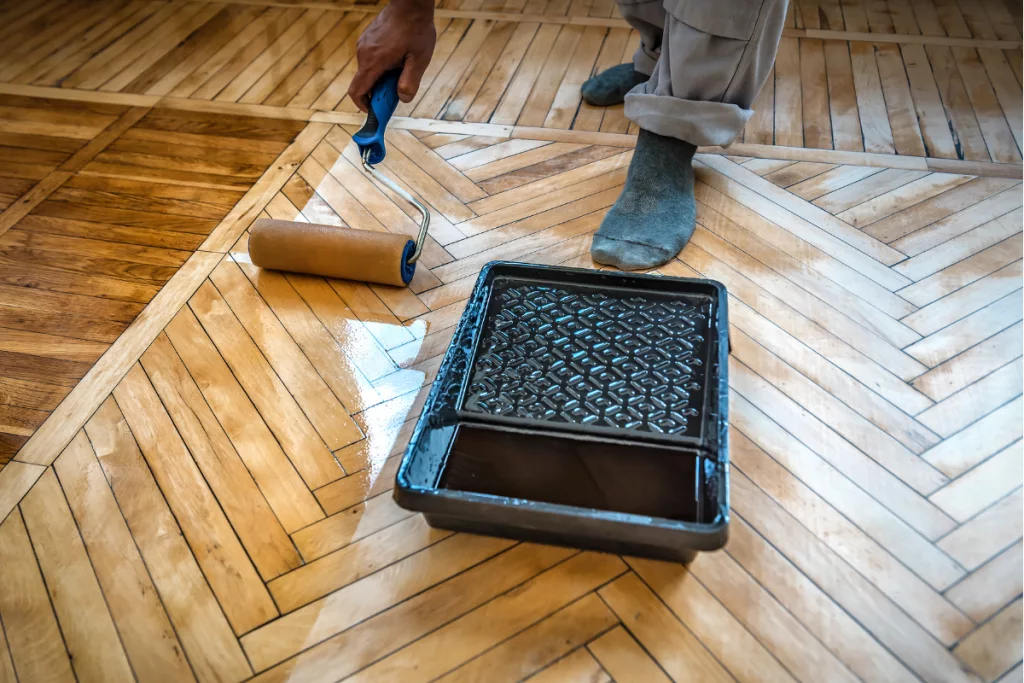
Maintenance And Care Of Freshly Painted Wood Floors
Maintaining the appearance and longevity of freshly painted wood floors is crucial. The following tips will help you preserve the beauty of your floors:
- Regular Cleaning: Clean the surface regularly using a soft bristle broom or a dry mop to prevent dust and dirt from scratching the paint.
- Using The Right Cleaning Products: When a more thorough cleaning is necessary, use a mild, pH-neutral floor cleaner specifically designed for painted wood floors. Avoid harsh chemicals that can strip the paint or dull the finish.
- Avoiding Water Damage: Never soak painted wood floors. Instead, use a slightly damp mop for cleaning. Any spills should be cleaned immediately to prevent water damage.
- Using Protective Pads: Furniture legs should have felt pads attached to prevent them from scratching the painted surface when moved.
- Rugs And Carpets: Use rugs or carpets in high-traffic areas to prevent excessive wear on the paint, especially in rooms with heavy furniture.
- Touch-Ups: Be prepared to do a touch-up now and then. Regardless of how well you maintain your floor, it may require touch-ups after heavy-duty use or accidental damage.
- Regular Polishing: Regular polishing can help maintain the shine and help your floor look new longer.
How To Handle Paint Spill On Wood Floors
Paint spills can happen even to the most careful painter. However, a spill is not a sentence to stained floors. Here’s how to handle a paint spill on your wood floors.
As soon as a paint spill occurs, immediate action is key. First, blot the excess paint with a damp cloth or paper towel, avoiding wiping or rubbing, which can push the paint further into the wood grain. Use a paintbrush to apply water to the spill if it’s water-based paint or mineral spirits if it’s oil-based.
Once you’ve blotted away the excess paint, use a mild soap and water mixture to clean the surface gently. If a stubborn stain remains, consider a paint remover, but test it in an inconspicuous area first, as it can discolor the wood.
Cover your floor with a drop cloth to prevent future spills, ensuring it’s tucked around the baseboards and corners while painting. You can secure it with painter’s tape to prevent slipping. Also, go for paint cans with a spill-proof design or use a paint tray.
Environmentally-Friendly Wood Floor Paints
The growing demand for sustainable alternatives has led paint manufacturers to create products with fewer harsh chemicals. Latex and acrylic paints are now formulated with low or zero volatile organic compounds (VOCs), making them more environmentally friendly than traditional oil-based paints.
These eco-friendly paints also follow strict environmental standards, prioritizing the health of both users and the planet.
Benefits Of Using Environmentally Friendly Wood Floor Paints
Using environmentally friendly wood floor paints offers several benefits besides reducing your carbon footprint. They emit fewer harmful fumes, improving indoor air quality and reducing health risks.
Some eco-friendly paints also contain antimicrobial properties, providing extra protection for vulnerable wood floors, particularly in the basement or patio areas.
How To Ensure The Paint You Found Is The Best And Most Environmentally-Friendly Option
To ensure you’re choosing the best environmentally-friendly option for your wood floor paint, consider the following aspects:
- Look For Low VOC content: Check the paint label for information about VOC levels—lower numbers or a “low VOC” designation indicates a more eco-friendly choice.
- Choose A Reputable Brand: Companies such as Benjamin Moore, Sherwin Williams, and Valspar offer high-quality, environmentally-friendly paints with responsible production processes.
- Seek Certification: Go for paints certified by entities like Green Seal or Greenguard, which validate the product’s environmental credentials.
Importance Of Choosing The Best Overall Paint For Your Wood Floors
Choosing the best overall paint gives you the power to withstand wear and tear, fulfill your aesthetic desires, and retain the character of your old wood. Acrylic paint might be the best choice for its resilience and range of colors, while anti-slip paint is perfect for high-traffic areas. Certain brands offer a variety of antibacterial and anti-mildew solutions. An enamel might be the choice for a high-gloss finish.
It’s best to consider environmentally friendly products such as low-VOC paints in painting. If you want to paint an indoor or outdoor space, we encourage using eco-friendly, water-based options.

The color palette is crucial for creating the right mood and atmosphere, so consider your paint colors thoroughly. A faded, soft pine green can transform an old wood porch into a peaceful outdoor haven, while a saddle brown might just be the polishing touch for your interior room.
A fresh coat of paint might need a top coat of clear, water-resistant sealant to achieve a lasting texture. Proper preparation before painting is essential for the best and long-lasting finish.

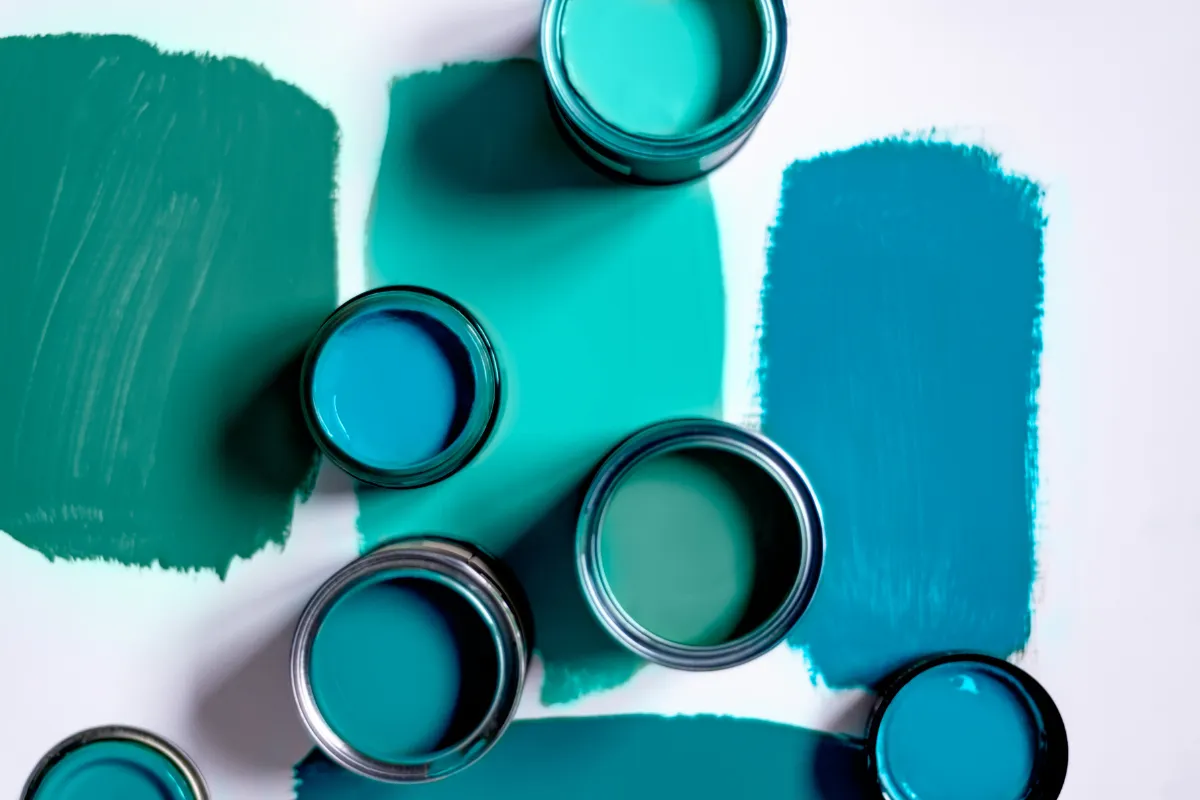
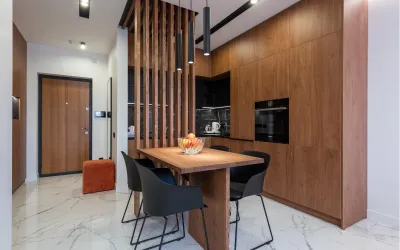
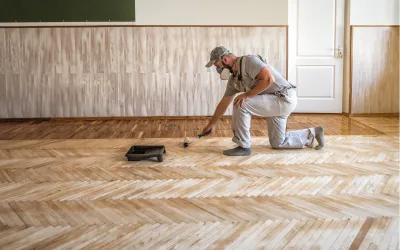
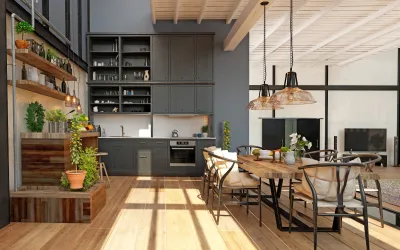
0 Comments